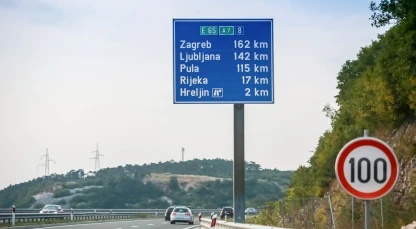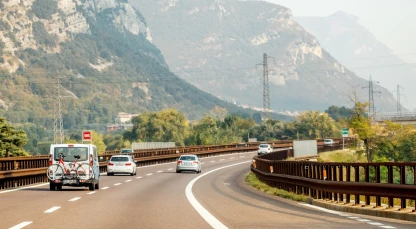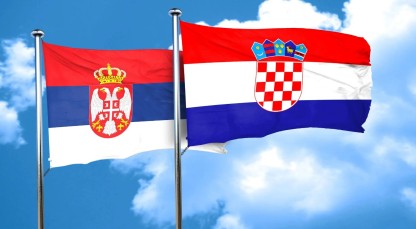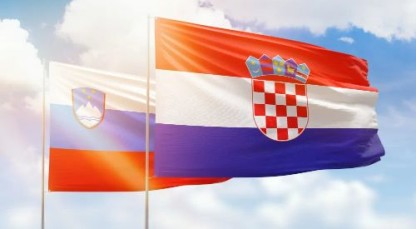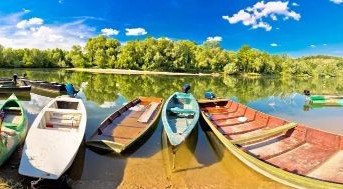Border Crossings Bosnia-Croatia
The Croatia-Bosnia border: past and present
History, geography, culture, and politics have all played a role in sharing the relationship between Croatia and the nation of Bosnia and Herzegovina in the Balkans. The two nations share a history of cooperation, dating to their time as part of Yugoslavia. When Yugoslavia split, fracturing the Balkans in the early 1990s, first Bosnia and Herzegovina and later Croatia declared their independence, as republics. Diplomatic relations were established in July 1992. In general, relations between Bosnian Serbs and Bosnian Croats are now peaceful, although there is a history of animosity.
Below, we detail all a road user heading from Bosnia and Herzegovina into Croatia needs to know. Included is a background to their tradition of border crossing cooperation and development and a summary of Croatia as a destination.
We look at border procedures and discuss some of the major Croatia-Bosnian border crossings. Also included are some practical information and advice on the topic. Before we proceed, it is important to remember the need for a vignette when travelling on the motorways.
Cross-border cooperation in border infrastructure in Croatian and Bosnian territory
Since then, Bosnia and Herzegovina and Croatia have cooperated on a wide range of border-related issues. One of the key areas of focus has been the development of cross-border infrastructure. An example of this is in how the they have jointly sought funding from the European Union to re-establish and upgrade the entire route between Novi Grad, Bosnia and Knin, Croatia.
Both countries value the development of related infrastructure, as can be seen in the 2020 construction of a new bridge. Spanning the Sava River, it connects the countries and has proven critical in improving transportation links, thereby benefiting trade.
A little about Croatia
Situated in southeastern Europe, Croatia is one of the most sought-after destinations in the region. With a history dating back many centuries and a diverse culture, it is truly fascinating. Layer this on a gorgeous landscape and you have a land worth of exploration.
Croatia has earned a deserved reputation amongst travellers to the Balkans. Its scenic highlights include Plitvice Lakes National Park and the Adriatic coast.
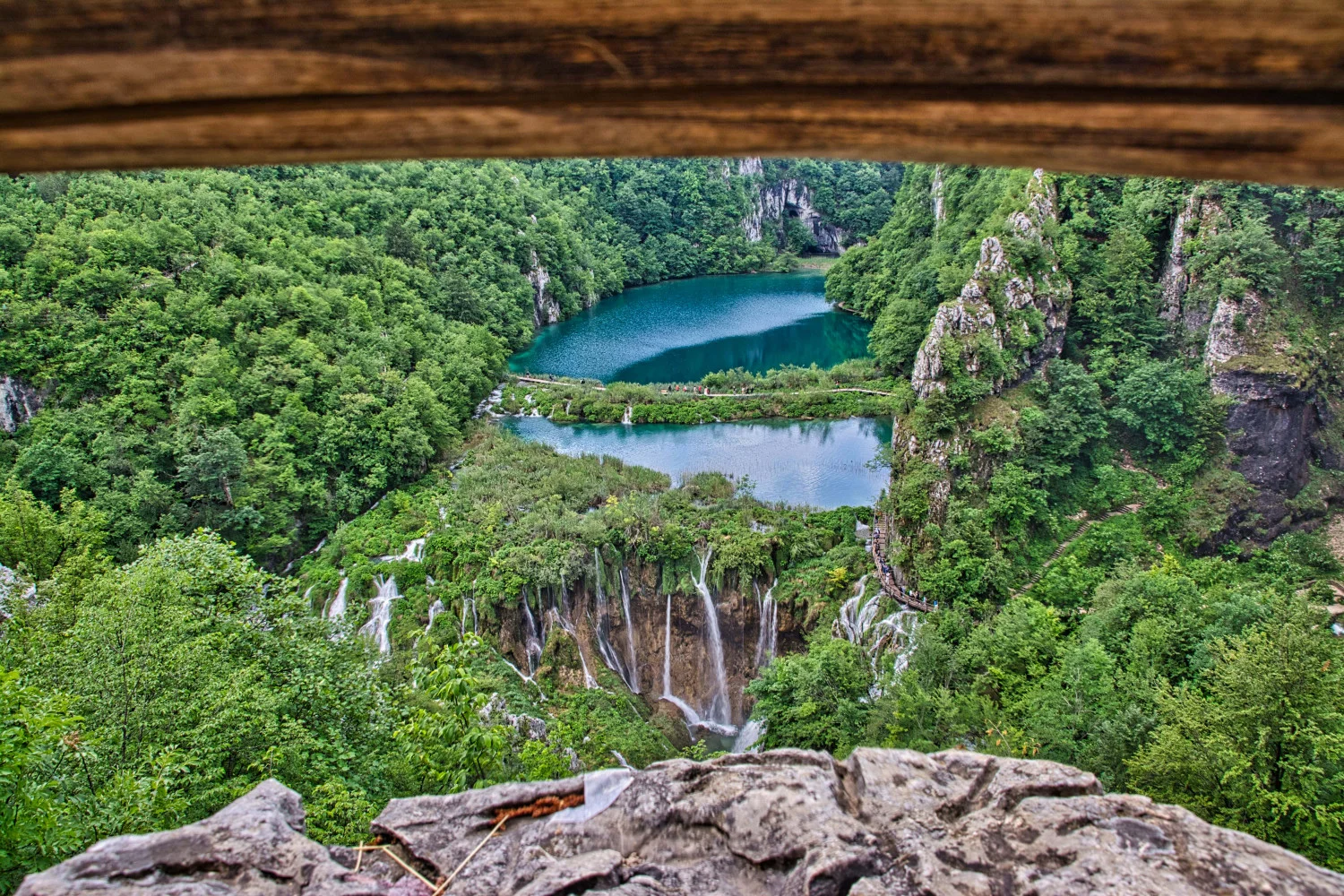
Historical attractions include the ancient Croatian port of Dubrovnik and Diocletian's Palace. Settlements vary from quaint villages to busy cities like Split and Zagreb. The locals are hospitable, willingly sharing their pride in Croat history and cuisine.
Connecting all this is an excellent road network. Modern motorways, such as the A6 in southern Croatia, move people and goods safely and efficiently across the country.
Choosing where to cross between Bosnia and Herzegovina and Croatia
In total, there are 30 places where you can pass between the two nations. With a shared border of over 956 km (594 mi), here are a few things to consider before setting out:
- Where will your trip start?
- Where will your trip end?
- Which border post is between the two points?
- Possible delays?
- Official checkpoints?
By answering these questions, you will be able to choose the route most suited to your needs.
Waiting Times at the Croatia-Bosnia Border
Various factors can affect waiting times when crossing border from Croatia to Bosnia and Herzegovina. The time of day, season (both climatic and tourist), and the type of crossing can all play a role. Major crossing points are generally busier, while the summer travel season sees congestion. To reduce waiting times, check the Croatian Border Police website.
Border crossing procedures when travelling between Bosnia and Herzegovina and Croatia
When crossing Croatia's border with Bosnia and Herzegovina, a valid passport or travel document must be available. The transit points are open 24/7 year round. If required by your country, be in possession of the necessary visa.
Citizens of Bosnia may enter the Schengen Area for short stays without a visa. Non-EU citizens in possession of a Schengen visa may enter Bosnia, thanks to the latter's candidate status for EU membership.

When leaving the Schengen zone, travellers must present their valid travel documents or passport. Those requiring a travel authorisation or visa to enter their destination country must also present this on request.
Note that all COVID-19 travel restrictions have been lifted by both Croatia and Bosnia. As such, travellers are no longer required to provide vaccination certificates, regardless of their country of origin or departure.
It is also worth noting that if you are travelling in southern Croatia, and would prefer not to enter Bosnia, you can divert via the Pelješac peninsula, using the Pelješac Bridge on Route 674.
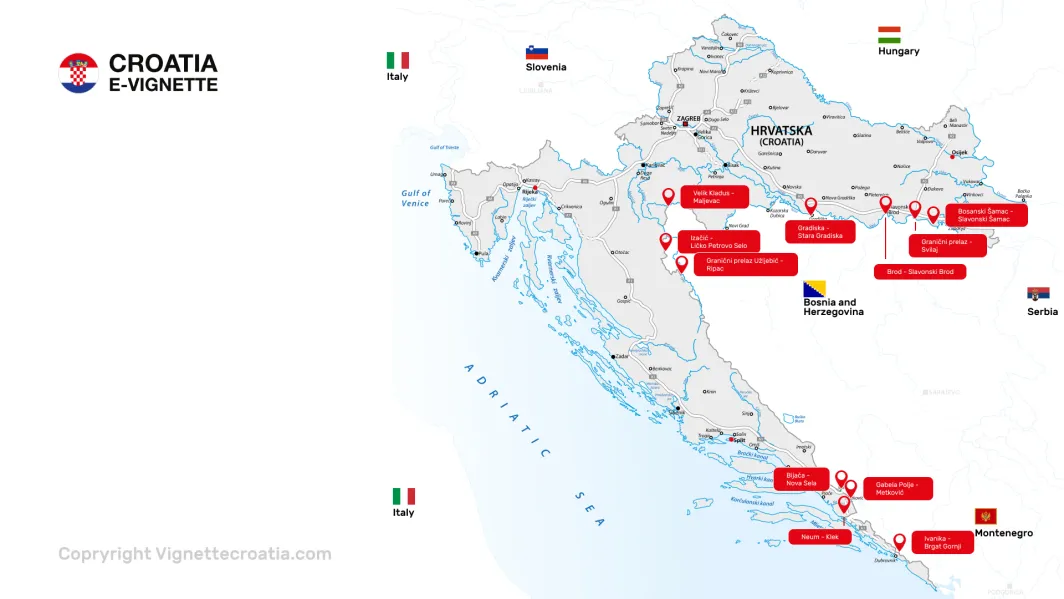
Popular border crossing points between Croatia and Bosnia and Herzegovina
Here is a list of some of the popular transit points between the countries of Bosnia and Herzegovina and Croatia. We name the respective crossing stations and the road on which they are located. You'll also find a link to a webcam (if available) and an example of a popular attraction or two nearby:
Bosanski Šamac (Bosnia and Herzegovina) - Slavonski Šamac (Croatia) - E70
- Webcam:
- Popular nearby: The Lonjsko Polje Nature Park which is a wetland area that is home to a variety of bird species. Travel north on the E73 to reach this crossing from Sarajevo.
Gradiska (Bosnia and Herzegovina) - Stara Gradiska (Croatia) - E661 using the Gradiska Bridge
- Webcam:
- Popular nearby: Slavonski Brod has several tourist attractions including the Brod Fortress and city tours. You can reach this crossing by travelling on the E661 from Sarajevo, the Bosnian capital.
Granični prelaz Užljebić (Croatia) - Ripac (Bosnia and Herzegovina) - M11
- Webcam: None
- Popular nearby: Una National Park in Bosnia and Herzegovina is great for hiking and exploring nature. To reach Sarajevo, follow E761
Brod (Bosnia and Herzegovina) - Slavonski Brod (Croatia) - M14.1
- Webcam:
- Popular nearby: There are numerous historical and cultural attractions on both side of this border transit point, such as the Brod Fortress in Slavonski Brod. From here, you can travel south to Sarajevo.
Bijača (Bosnia and Herzegovina) - Nova Sela (Croatia) - A1
- Webcam: None
- Popular nearby: The crossing is a short distance from the Adriatic Sea and the port of Ploče
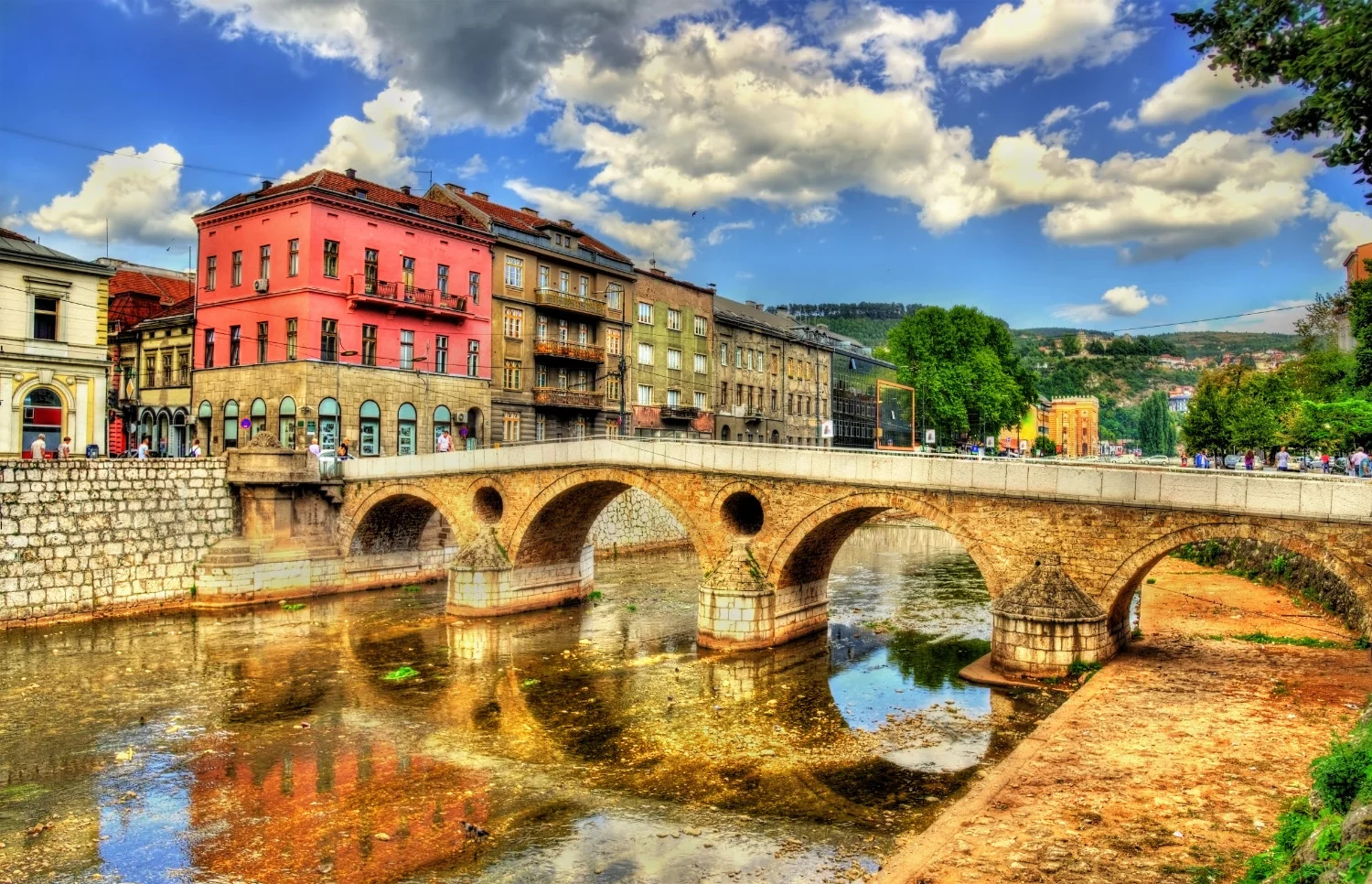
Gabela Polje (Bosnia and Herzegovina) - Metković (Croatia) - R425a
- Webcam: None
- Popular nearby: Hutovo blato Nature Reserve in Bosnia and Herzegovina is an expansive nature retreat. On the Croatian side, Pod Gredom Nature preserve. The Croatian coast is about 40 km away. Sarajevo can be reached on the E73, via Mostar.
Izačić (Bosnia and Herzegovina) - M5/R217- Ličko Petrovo Selo (Croatia)
- Webcam: None
- Popular nearby: The remarkable Plitvice Lakes National Park is one of the most popular tourist destinations in Croatia. To get here from Sarajevo, take the E761 to the borders.
Neum (Bosnia and Herzegovina) - Klek (Croatia) - M2/R8
- Webcam: None
- Popular nearby: Mali Školj Nature Preserve in Bosnia and Herzegovina is a coastal location great for water-based activities.
Velik Kladusa (Bosnia and Herzegovina) - Maljevac (Croatia) - R400a/R216
- Webcam: None
- Popular nearby: About an hour from Karlovac, where you can visit the Dubovac Castle and other sights of historical and cultural interest.
Ivanika (Bosnia and Herzegovina) - Brgat Gornji (Croatia) - M20/Route 233
- Webcam:
- Popular nearby: The historic city of Dubrovnik is a Croatian historic city. The beautiful Bosnian Dobrićevo Monastery overlooks Bileca Lake, not far from the borders of Croatia and Bosnia and Herzegovina. To reach Sarajevo from Dubrovnik, use the M20/M18.
Granični prelaz (Bosnia and Herzegovina) - Svilaj (Croatia) - A1/A5 using Svilaj Bridge
- Webcam:
- Popular nearby: The A5 Motorway traverses eastern Croatia from Hungary. By joining the E70-East, you can enter Serbia. Continue south on the A1 in Bosnia and Herzegovina to reach the capital, Sarajevo.
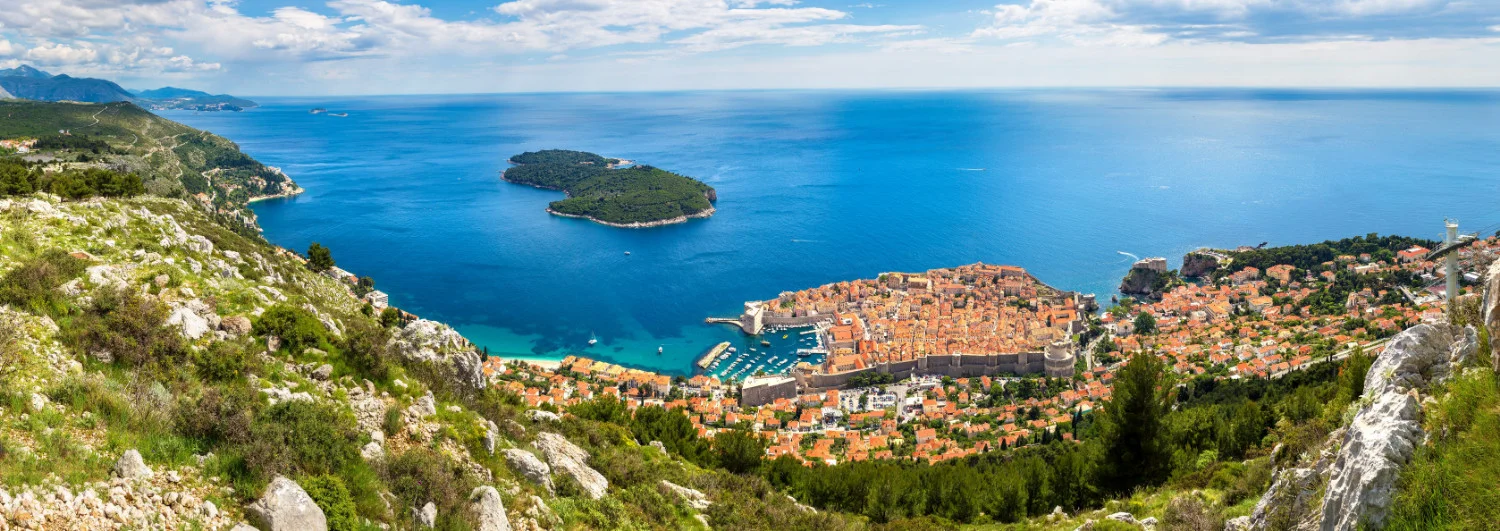
Two countries with an intertwined past, present and future
Given the long history and extensive common border of both, there are many similarities that travellers between the two countries will notice. Likewise, each country has its own identity. That said, in matters affecting their common boundary, they are united in purpose and commitment.
